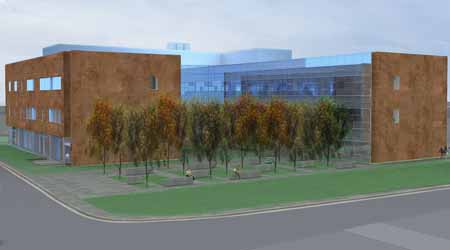ANSI/ASHRAE. (2007). Standard 62.1-2007, Ventilation for Acceptable Indoor Air Quality. Atlanta, GA: American Society of Heating Refrigeration and Air Conditioning Engineers, Inc.
ANSI/ASHRAE. (2007). Standard 90.1-2007, Energy Standard for Buildings Except Low-Rise Residential Buildings. Atlanta, GA: American Society of Heating Refrigeration and Air Conditioning Engineers, Inc.
ASHRAE. (2009). Handbook of Fundamentals. Atlanta: ASHRAE.
California Energy Commission. (2005). Nonresidential Alternative Calculation Method Approval Manual for the 2005 Building Energy Efficiency Standards for Residential and Nonresidential Buildings. California Energy Commission.
GE. (2010). MS6001B Gas Turbine. Retrieved October 24, 2010, from http://www.gepower.com/prod_serv/products/gas_turbines_cc/en/midrange/ms6001b.htm
Jeong, P. J.-W., & Mumma, P. P. (October 2006). Designing a Dedicated Outdoor Air System with Ceiling Radiant Cooling Panels. ASHRAE Journal , 56-66.
Kulkarni, N. N. (2010). Baseline Energy Usage for Nassau Community College Life Sciences Building. Boston: WSP Flack + Kurtz.
Long Island Power Authority. (2010). 2010 LIPA Incentive Schedule for Commercial Efficiency Custom and Whole Building Design Projects. New York, Long Island. Retrieved November 12, 2010, from Long Island Power Authority: http://www.lipower.org/commercial/efficiency/commercial-whole.html
Mossman, M. (2010). RSMeans Mechanical Cost Data 2011. Kingston, MA: R.S. Means Co.
New York Department of State. (2010). Building Code of New York State. Albany.
New York Department of State. (2007). Mechanical Code of New York State. Albany.
Parsons Brinckerhoff. (2009). Current Status of the Nassau Central Utility Plant Scheme. New York, NY: Parsons Brinckerhoff.
Rushing, A. S., Kneifel, J. D., & Lippiatt, C. B. (May 2010). Energy Price Indices and Discount Factors for Life-Cycle Cost Analysis – 2010. Gaithersburg, MD: NIST.
U.S. Energy Information Administration. (2003). Table E2A. Major Fuel Consumption (Btu) Intensities by End Use for All Buildings, 2003. Retrieved October 24, 2010, from U.S. Energy Information Administration - EIA - Independent Statistics and Analysis: http://www.eia.doe.gov/emeu/cbecs/cbecs2003/detailed_tables_2003/2003set19/2003pdf/e02a.pdf
U.S. Green Building Council. (2008). LEED 2009 For New Construction and Major Renovations. Washington D.C.
|
